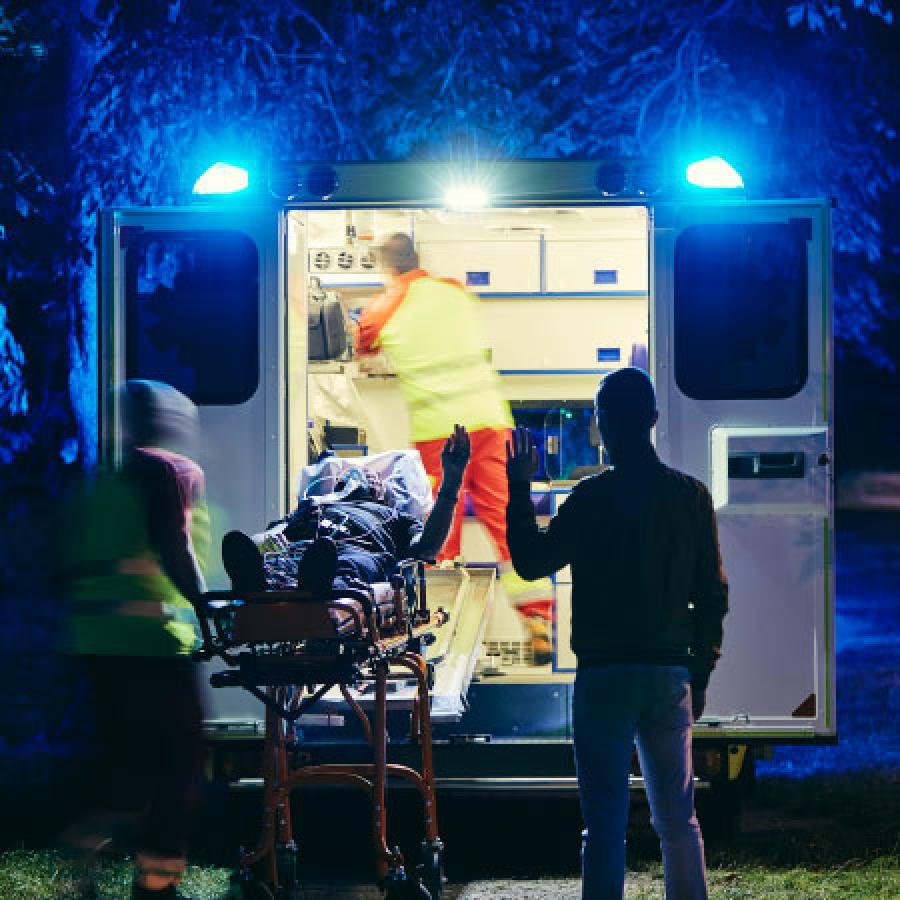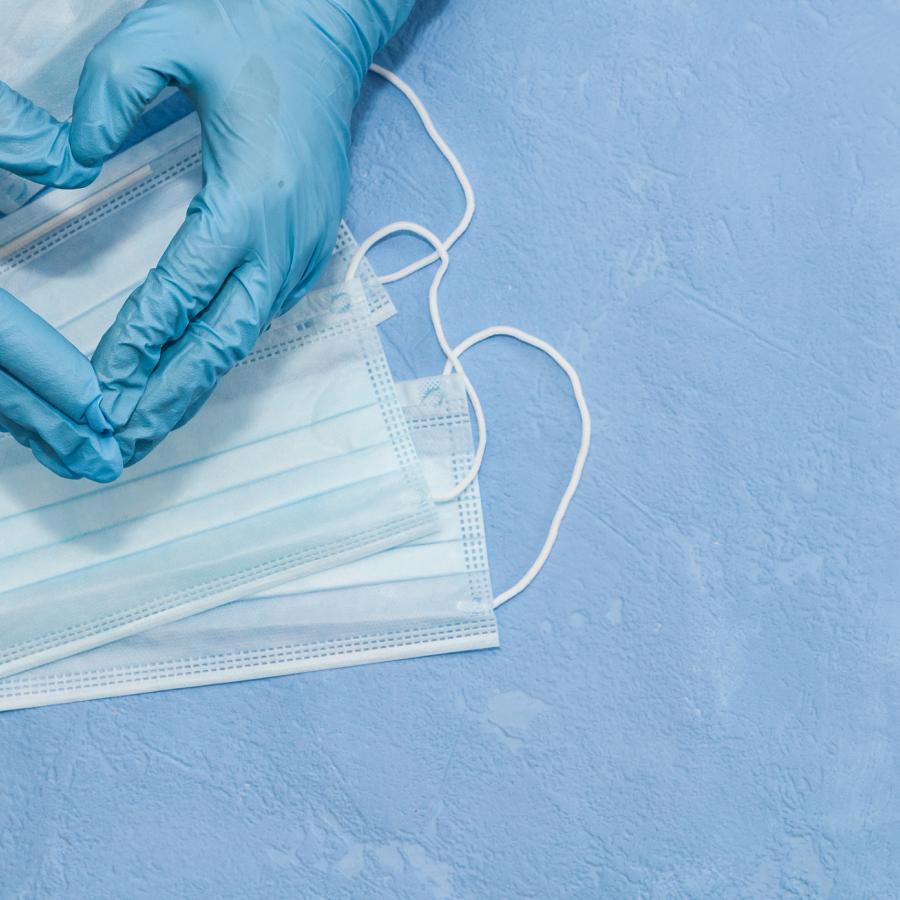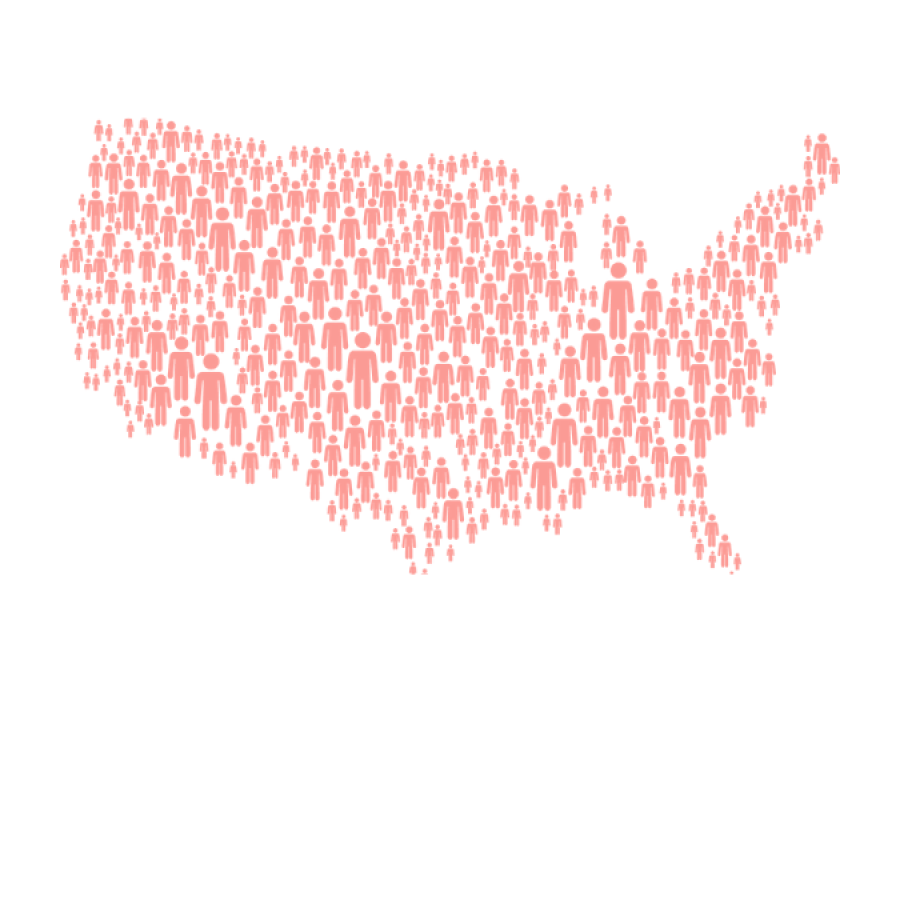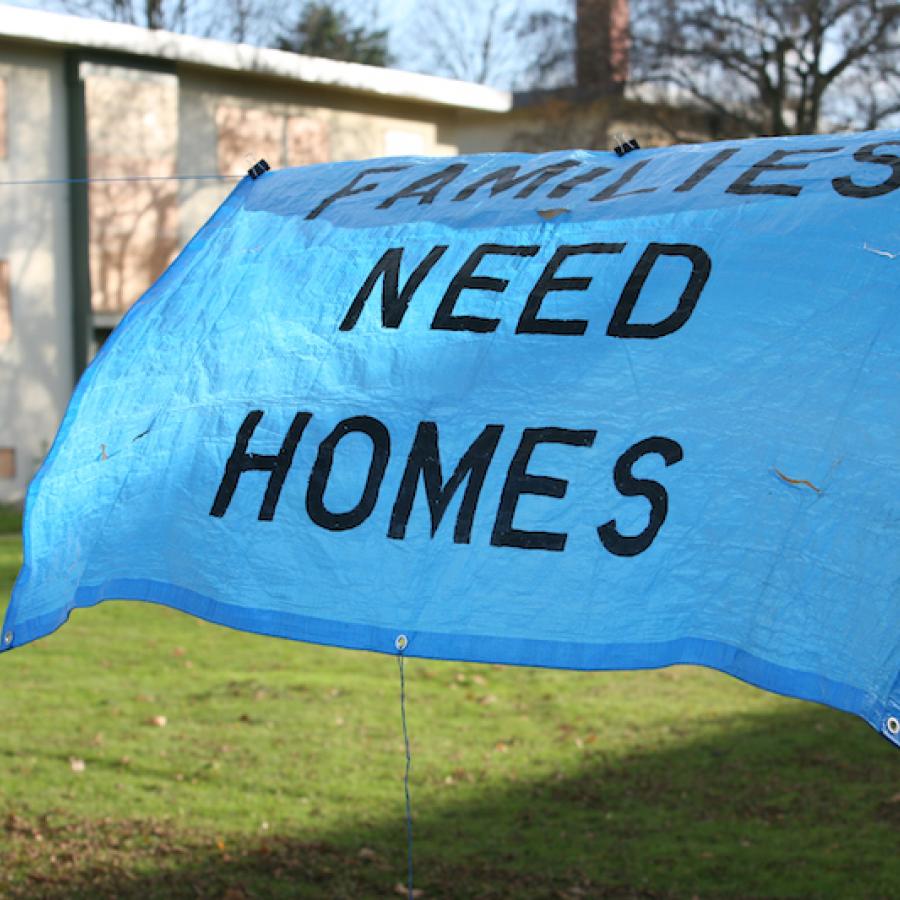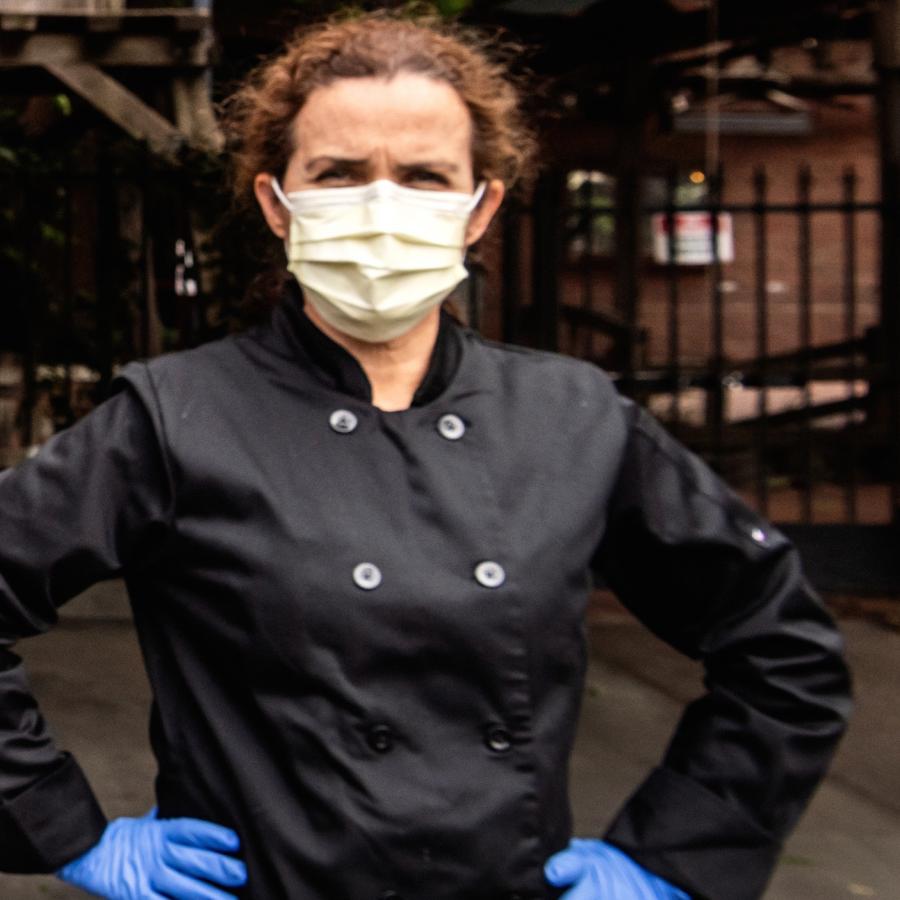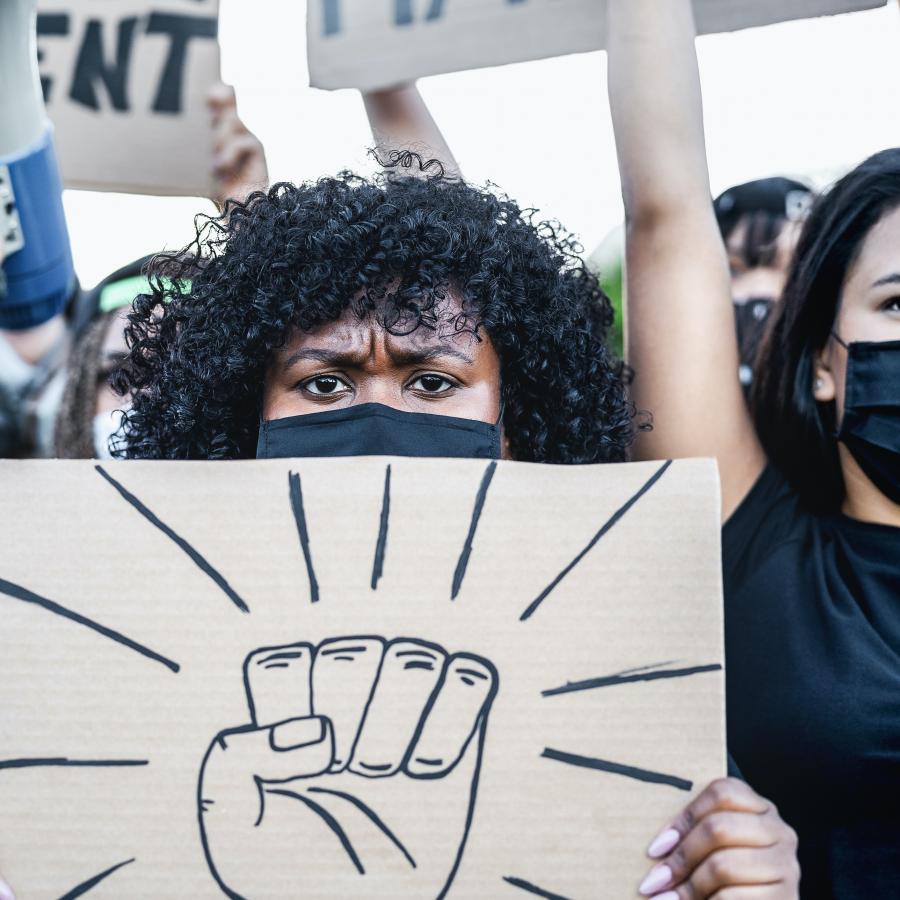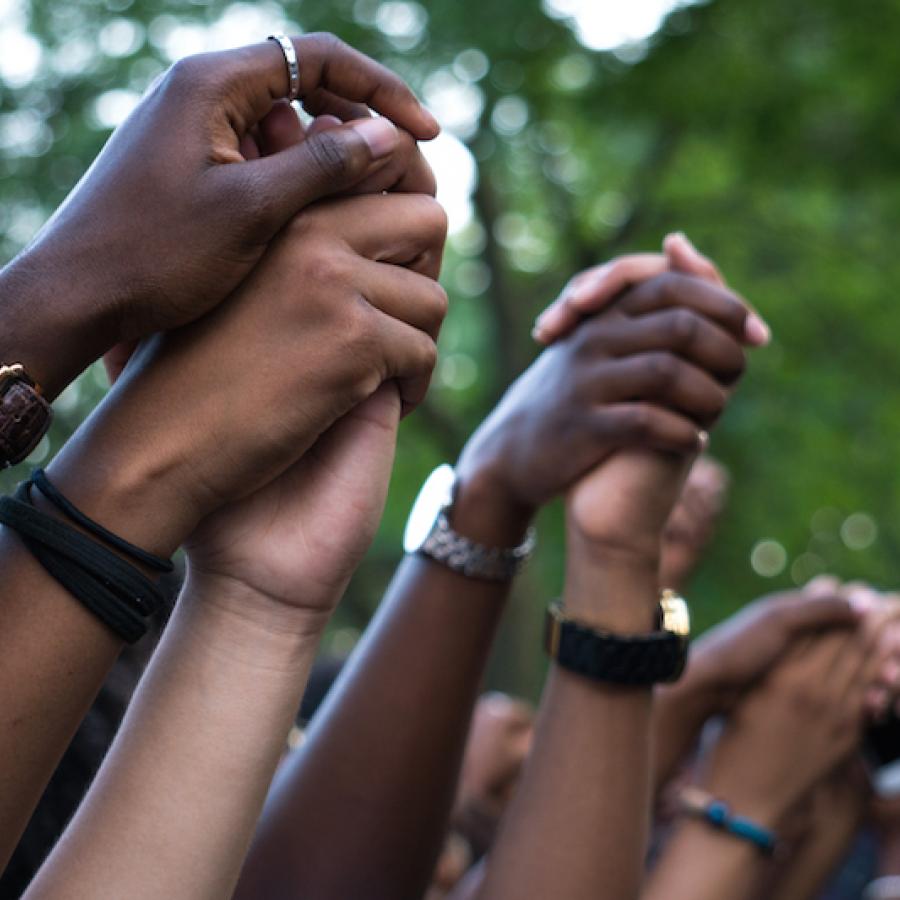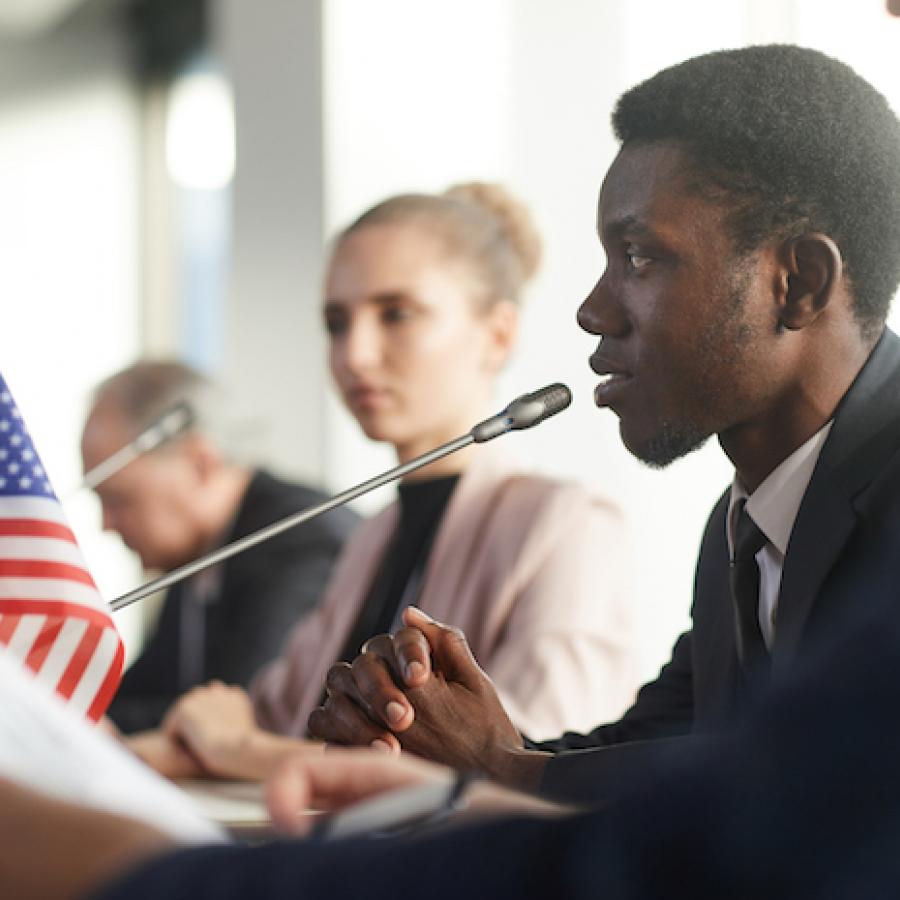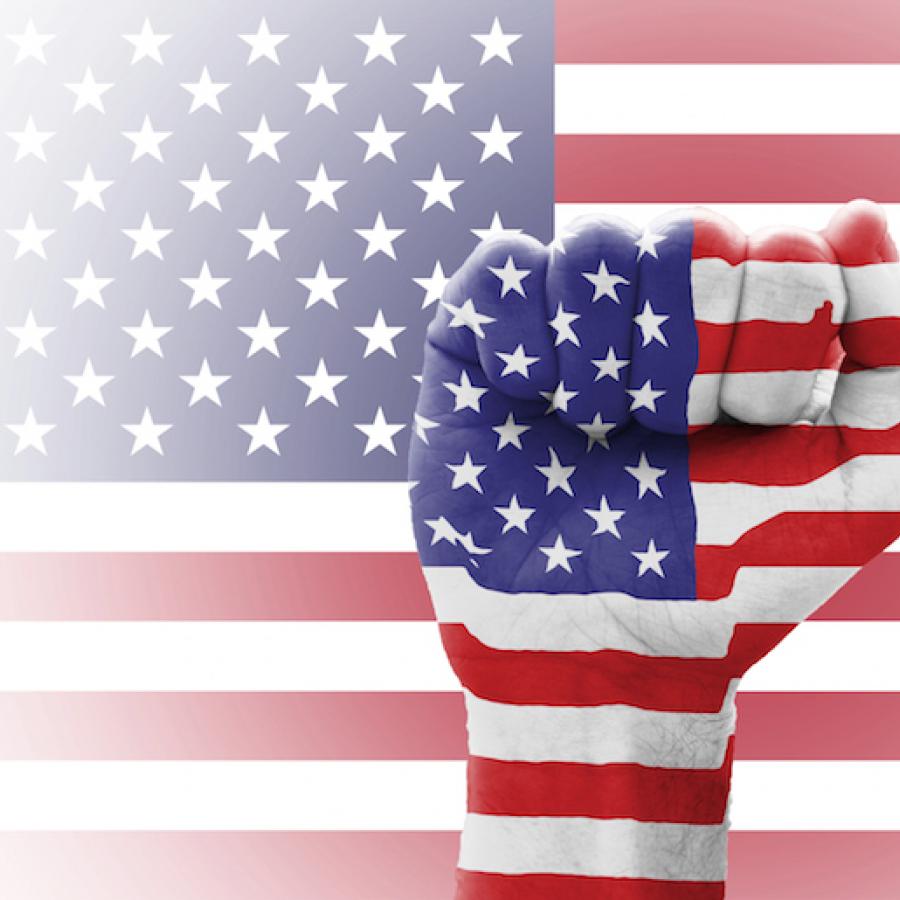Coronavirus surges in Latinx communities, doctors protest racism, and creating a safety net for undocumented immigrants, in this week’s COVID-19 and Race Commentary.
Issue 12, July 1, 2020
Why the Curb-Cut Effect is Key to Beating COVID-19
By Angela Glover Blackwell
Many of you have heard about the curb-cut effect, solutions designed to serve the most vulnerable lead to large-scale positive impacts. Never has this idea been more relevant — and urgent.
The idea is based on those cutouts in the sidewalk at the corner. They exist due to the advocacy of people in wheelchairs. But almost everyone can point to a time when curb cuts were helpful: pushing a stroller, pulling a cart, or dragging luggage. They even save lives by orienting pedestrians to cross the street at the corner. Once you know what to look for, the curb-cut effect is easy to spot: a ban on smoking in public spaces began with flight attendants advocating for their health on airplanes; Head Start efforts in Mississippi designed to serve poor Black children gave national momentum for universal early childhood programs. In each instance, solving the challenges facing the most vulnerable, with nuance and specificity, created broad societal benefits.
The COVID-19 crisis, raging out of control, is the most dramatic example in recent memory of what happens when the needs of the most vulnerable are ignored and pushed to the margins. Decades of neglecting Black people and Black neighborhoods created the surfeit of pre-existing conditions — diabetes, hypertension, asthma — that have led to a COVID-19 hospitalization rate for Black people that is five times that of Whites. Latinx people, who make up the highest concentration of low-wage frontline workers, are also getting sick in disproportionate numbers. Prison inmates and immigrant detainees in overcrowded facilities are testing positive for COVID-19 at astronomical rates. And the failure to provide basic infrastructure to Native communities has resulted in the Navajo Nation — where about one-third of households lack running water — having the highest COVID-19 infection rate per capita in the United States.
Think of the suffering that could have been avoided and the lives that could have been saved if these and other vulnerable groups had been targeted early for massive awareness, support, and protective interventions. Imagine where we would be now if, at the first appearance of the novel coronavirus, there had been a national effort focused on protecting residents and staff of nursing homes, where 43 percent of COVID-19 deaths have occurred. Consider what the impact would have been if sufficient personal protective equipment (PPE) had been provided to all frontline workers, such as bus drivers, grocery clerks, and meatpacking and food plant workers, not to mention health care workers — and if free testing had been available in low-income communities of color. Thousands of lives would have been saved. The entire nation might be moving back to normalcy instead of watching the death toll mount daily, with no end in sight.
As we struggle to find ways to successfully open the economy it is imperative that we consider the curb-cut effect and act accordingly. But that is not happening. The rush to get back to business as usual has predictably led to a spike in infections. Neither government nor businesses nor everyday residents have stepped up aggressively and urgently to place a priority on protecting the most vulnerable.
Wearing masks has become a political issue. Saving businesses is valued over saving lives. Overcoming boredom seems more important than protecting the health of elderly and vulnerable family members and neighbors. There is an urgent need to roll out sustained economic supports for frontline workers. They must not be asked to choose between their lives and their livelihoods.
If all sectors — government, business, and civic — make it a priority to focus on the health of the most vulnerable people and the workers who put themselves in harm’s way, and if we collectively respond with nuance, specificity, and generosity, we can beat this virus and create a fairer, more inclusive economy.
The nation has yet to fully grasp the lesson of the moment: if the most vulnerable do not thrive, the nation will not. Our destinies are intertwined. It’s the curb-cut effect.
Angela Glover Blackwell is Founder in Residence at PolicyLink and host of the podcast Radical Imagination.
News, Analysis, and Commentary, Curated From Around the Web
Latinx communities are experiencing a sharp rise in coronavirus infections, as many states reopened early and the United States records its biggest surge in cases since the pandemic began. In recent weeks cases have increased twice as fast in counties where at least a quarter of the population is Latinx, compared to all other counties, a New York Times analysis finds. The disparity is glaring not only in big states with large Latinx populations, such as California, Texas, and Florida, but also in Wisconsin and parts of Washington state and the South. In North Carolina, Latinx people account for 10 percent of the population but 46 percent of cases.
The coronavirus surge, occurring primarily in communities and states that ignored public health recommendations to try to jumpstart the economy, was largely preventable, Vox writes. Cases have generally not spiked in cities where hundreds of thousands of people have gathered for protests, the Philadelphia Inquirer reports. While scientists theorize that’s because the virus doesn’t spread as easily outdoors, one study offers another explanation: the protests encouraged more people to stay home, offsetting any impact of viral transmission during the demonstrations.
The rush to reopen even as COVID-19 devastates communities of color, older adults and their caregivers, and people with health challenges illustrates the degree to which public attitudes and government policy “have been shaped by one clear and horrifying principle: some lives matter more than others,” Foreign Policy reports. Politicians are writing off “those most vulnerable to COVID-19 as weak, frail, and ultimately unimportant.” The Laura Flanders Show examines the connection between white supremacy and the COVID-19 crisis.
At least 54,000 residents and employees of nursing homes and other long-term care facilities have died, accounting for 43 percent of the nation’s coronavirus-related deaths, the New York Times reports. This country’s age-old neglect of its seniors extends to the workers who care for them, mostly Black and immigrant women, E. Tammy Kim writes in the Times.
Meanwhile, the Trump administration asked the US Supreme Court last week to end the Affordable Care Act, which would strip 20 million Americans of their health insurance, Truthout reports. Black and Latinx people, who have had the biggest gains in health coverage under the law, would lose the most if it is repealed, further widening the enormous health disparities that COVID-19 has lifted from the shadows, the journal Health Affairs writes.
In a scathing ruling, a federal judge ordered US Immigration and Customs Enforcement to release all children held in custody for more than 20 days, NPR reports. US District Judge Dolly Gee of California said the Trump administration failed to provide even the most basic health protections for children and their families amid the pandemic.
Noting that 540 adults have already died from COVID-19 in the criminal justice system, the #JustUs Campaign is demanding that state and federal lawmakers develop emergency response and management plans for jails and prisons, Ms magazine reports. Last Week Tonight with John Oliver takes an in-depth look at the policy failures that have turned prisons into pandemic petri dishes. BorderX, a nonprofit run by UC-Berkeley law students, is using digital platforms to scale up free legal representation for detained migrants and get them released before the coronavirus strikes.
Undocumented immigrants and their families — an estimated six million taxpayers — were excluded from federal emergency aid. Now a budding grassroots movement is creating “undocufunds” to provide them with cash assistance, Talk Poverty reports. So far, demand vastly exceeds capacity. A fund in San Diego, which received more than 4,000 grant applications, has been able to award 200. The group is running a social media campaign to persuade people to donate all or part of their stimulus check to the fund.
As the nation confronts the overlapping crises of public health and racial injustice, voices of protest and advocacy are emerging from the medical establishment. Family physician Raj Sundar writes on KevinMD.com that after months of scolding patients, family, and friends who violated social-distancing recommendations, he joined thousands of health-care providers to march for racial justice. “I marched because I am tired of the increasing futility of my job as a doctor for Black Americans.”
Africa Stewart, president of the board of Doctors Without Borders-USA, writes: “For me, this is personal. No matter how good I am as a doctor, mother, wife, and human being, I can instantly be reduced to one simple word: black—and be judged as that alone. I was taught to work twice as hard and be twice as strong, but it never adds up to being safe in my existence.”
The influential New England Journal of Medicine has run a series of powerful essays and editorials on race over the past month, among them: diagnosing and treating systemic racism, bias in medical education, and racial inequities built into diagnostic algorithms. Also, a poem by Marvin E. Dingle, a surgeon at Walter Reed National Military Medical Center, on why he is marching:
“Because all these degrees I have didn’t protect me from
The tidal wave of hate that crushes and erases
March on
March on
After I’m gone.”
PolicyLink draws from articles, videos, interviews, and other sources across platforms, as well as from our network of equity leaders and activists, to bring you the latest information about COVID-19 and race. We offer this resource to:
- Provide easy access to information on the dual health and economic crises facing people of color;
- Put and keep racial equity at the center of our collective understanding of the pandemic and the policies needed for relief and recovery; and
- Lift up useful data and insights that can fuel equity advocacy and campaigns.
Please share with your networks and send your ideas and feedback. And follow us on Twitter, LinkedIn, Facebook and Instagram. #COVIDandRace
We hope you find the COVID-19 and Race Series an important tool for keeping up with news about the virus and its impact on communities we serve. As a non-profit organization, PolicyLink is honored to provide resources to support the needs of our nation's 100 million economically insecure individuals. Generous partners like you make our work possible.
Michael McAfee and Angela Glover Blackwell are grateful for the contributions of Fran Smith, Milly Hawk Daniel, Rachel Gichinga, Glenda Johnson, Jennifer Pinto, Heather Tamir, Ana Louie, Janet Dickerson, and Mark Jones to produce the COVID-19 & Race commentary.
